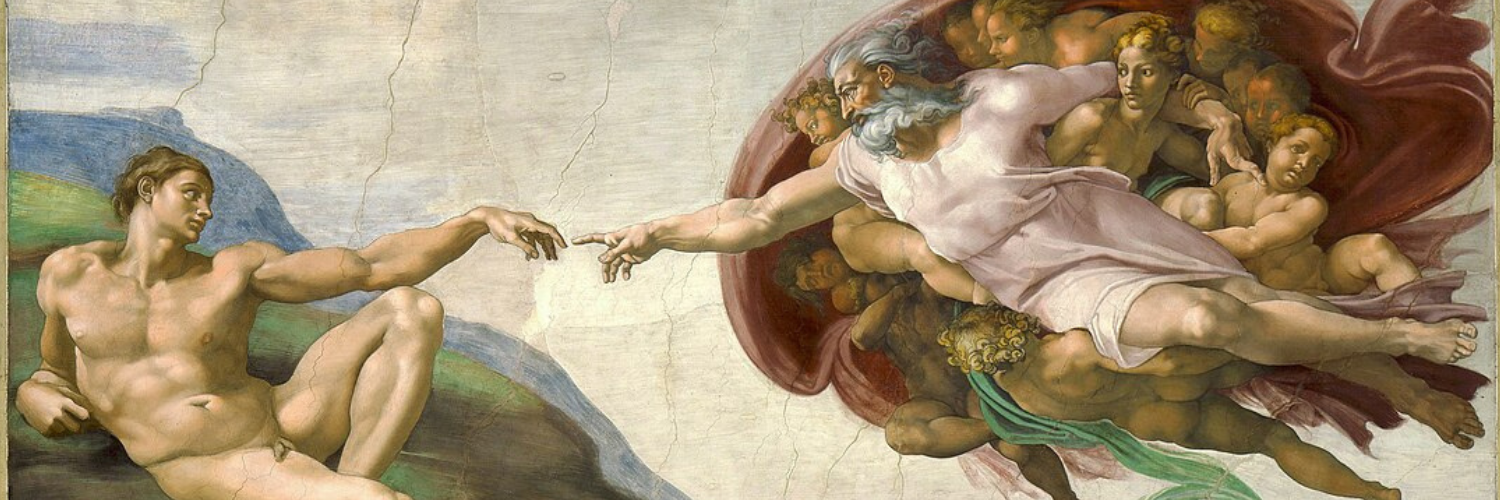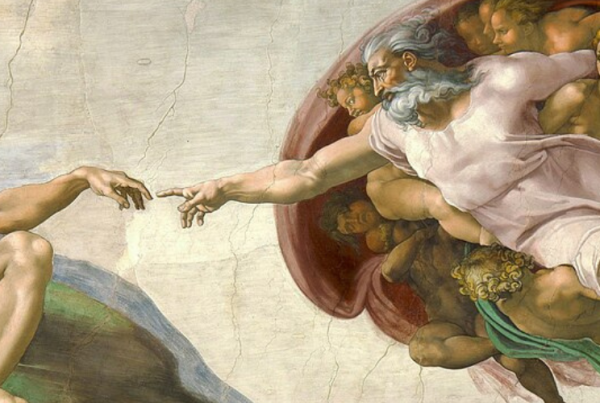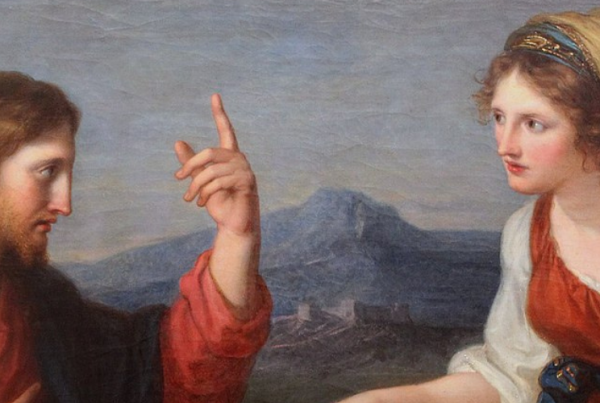
In His Image
Fr. Paul Barwikowski
Then God said: Let us make human beings in our image, after our likeness. Let them have dominion over the fish of the sea, the birds of the air, the tame animals, all the wild animals, and all the creatures that crawl on the earth. God created mankind in his image; in the image of God he created them; male and female he created them. (Genesis 1:26-27)
The Spirit of God hovered over the original shape of the matter created by God. That Spirit was also given by the Creator to man. Two different accounts, one from the priestly tradition and the other from the Yahwist tradition (we’ll cover that one in the next article), convey two different but complementary images of the creation of human beings.
The priestly tradition begins God’s creative work very solemnly; it is the result of a deep, thoughtful decision: Let us make man in Our image, like Us (Genesis 1:26). It is more likely, that in this way the biblical author wanted to vividly present God’s solemn reflection in the face of a key creative work. And perhaps in the background, there is a delicate signal of the presence of the Three Divine Persons!
The very image of creation is passed over by the priestly tradition in silence. Instead, it emphasizes its effect: So God created man in his own image, in the image of God he created him: male and female he created them (Genesis 1:27).

God created man in his own image and likeness. In Middle Eastern culture, the king was a reflection of the deity and was given divine power. Other people were treated as slaves of the gods. Meanwhile (according to the Book of Genesis) the Creator endowed all people with a royal gift.
The language used here points to an image, a representation, such as a sculpture, and the latter to something similar in appearance but not the same. Thus, man is in no way divine, but in some respects he imitates God. Therefore, man is like God, but he is not God. The privileged way of knowing God leads through man because he is his most faithful image. Situated at the top of creation, as a summary of the entire creative work, man appears as God’s masterpiece; it is not merely a “good thing”, but a “very good thing”.
How is this spirit, image, and likeness of God expressed? Scholars have different ideas. In rabbinical messages, it is the spiritual element that is emphasized here what we call – the soul. The soul is the image of the Lord, and as He fills the world, so does the soul fill the human body. As God sees everything, but is not seen by anyone, so the soul sees but cannot be perceived; as the Lord governs the world, so the soul governs the body; as God in his holiness is pure, so is the soul pure. The soul resides in a place inaccessible to our sight.
man appears as God’s masterpiece;
it is not merely a
“good thing”,
but a “very good thing”.
The reflection of God’s perfection, wisdom, and beauty in man is his reason, free will, and spirituality. Man has been gifted by God with creativity, the ability to bond with the Creator, to have personal relationships, and above all to love! These qualities make him a representative of God on earth, he has power over the earth and the world; its mission is to procreate, to populate the earth, to educate, to search for science, to create culture, and to carry out administrative and technical tasks. God-given power to a man is not absolute but should be exercised responsibly and with love for God’s other creatures.
The priestly tradition emphasizes yet another moment of the creation of man. God created him male (Hebrew “zakhar”) and female (Hebrew “nekeva”). “Adam”, meaning man (but also humanity in a broader sense), is “zakhar” and “nekeva”; but we also know that “Adam” is the image of God. God has something in Him that, in great simplification, we could call the “male element” and “female element”. One and the other! Not one of them, not only Father, Warrior, Avenger, Son, King, Bridegroom. In the Holy Scriptures, we find fragments in which we encounter God with maternal attributes (Matthew 23:37).
What This Means For Us
Both a man and a woman are needed to understand God because both are His reflections. This is the splendor of the marital experience this is the theological beauty of a man and a woman. A world in which a woman is considered “something lesser” or is trivialized or reduced to a secondary role no longer reflects God’s will or the intimate profile of God’s face.
For Further Reading On This Topic



